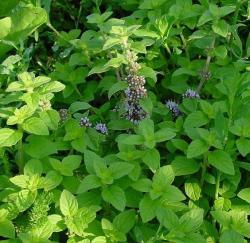ARTICLES TO READ

|
Properly pruning clematises will yield the maximum quantity of flowers by stimulating new growth and pruning keeps the more vigorous vines under control.
|

|
Camellia's abundant, showy flowers--ranging in color from the purest white to the deepest reds--add a striking, gracious element to the landscape.
|

|
Insects are the most successful living organisms on the Earth. That's just one reason it makes good sense to balance one against the other, rather than trying to kill pests with poisons. It is also true that in nature there are no good or bad bugs. All are trying to make a living in the way nature programmed them. But from a gardener's perspective, some insects help and some don't. It's smart to learn about and exploit insect behaviors. In this article you'll learn how to wisely purchase and use beneficial insects.
|

|
Once I began blending and testing herb teas to sell under my Garden Party label, I knew what I didn't want. An herb tea should never be flat and flavorless. Whether it's fruity or spicy, soothing or lively, simple or sophisticated, it needs taste and personality.
|

|
While gardeners love flowers for their beauty outdoors in the garden and indoors in a vase, few raise them to eat. That's a shame because many flowers are edible and bring lively flavors, colors and textures to salads, soups, casseroles and other dishes. Eating flowers is not as exotic as it sounds. The use of flowers as food dates back to the Stone Age with archeological evidence that early man ate flowers such as roses.
|

|
Companions in Life - be they spouses, partners, or even pets and their masters - should be compatible to thrive in each other's company. Ideal companion plants are the same way, and two of the best are clematis and roses. Both relish large doses of water, flourish in the same location and soil, and benefit from similar fertilizing schedules. Yet for all their similarities, they complement each other perfectly.
|

|
Horticultural therapy works because it provides a non-threatening, even soothing environment for real world, meaningful tasks. Having the opportunity to nourish or care for another living thing is also rewarding for most people.
|
|





